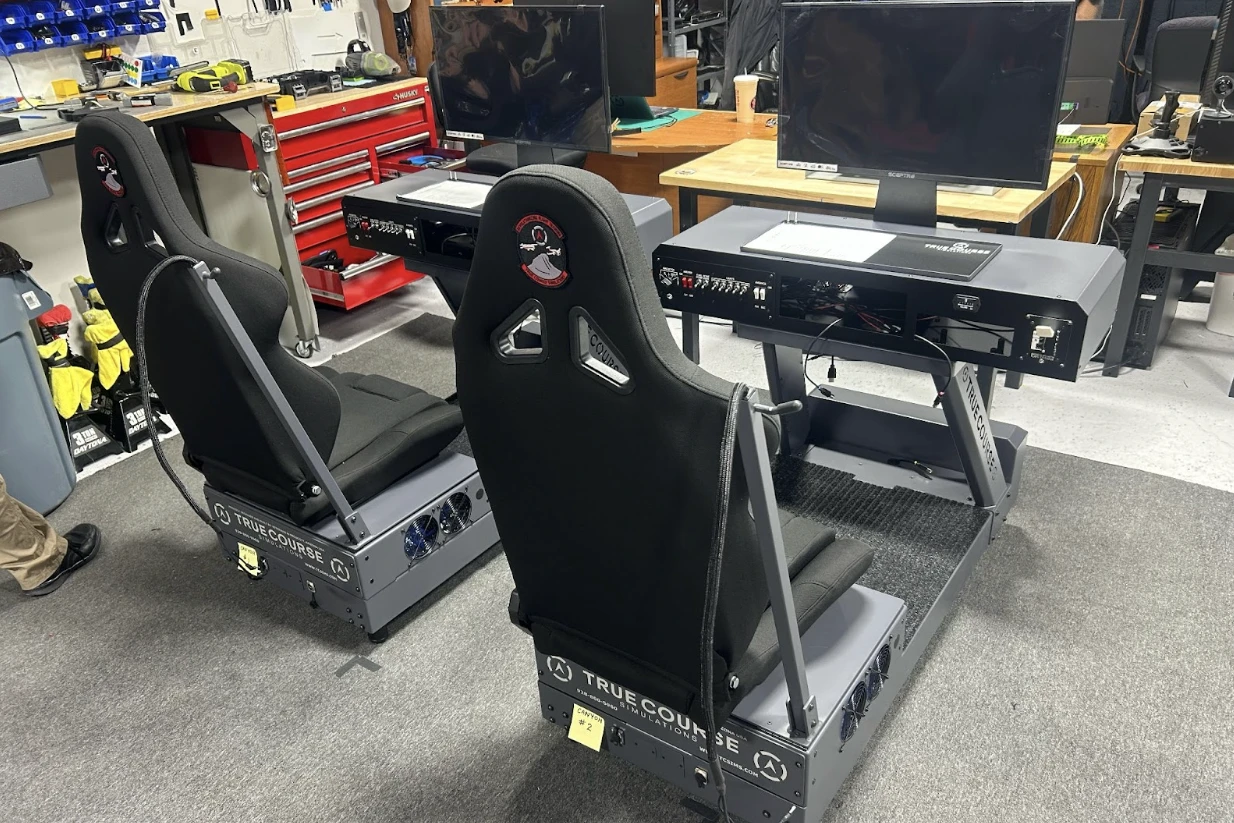
Virtual reality (VR) flight training is more than just the next step in technology—it is changing how we teach and learn in aviation. At True Course Simulations, we are passionate about helping aspiring pilots reach their goals through immersive, hands-on VR experiences that go beyond what traditional training methods can offer.
What is Virtual Reality Flight Training?
Using advanced simulation technology, virtual reality (VR) flight training replicates real-world flying conditions. Unlike conventional flight training, which often relies on costly aircraft rentals and instructor availability, VR training immerses students in highly realistic environments where they can practice crucial aviation skills anytime, anywhere. Our technology integrates virtual cockpit simulations with tactile feedback, enhancing knowledge retention and procedural understanding in ways traditional methods cannot achieve as easily or cheaply.
How Does VR Flight Training Work?
At the core of VR flight training is immersive technology that puts students in the pilot’s seat. Equipped with state-of-the-art VR headsets, trainees experience a fully immersive 360-degree environment with real-time motion tracking that mirrors actual flight dynamics. Our Immersive Training Devices (ITDs) incorporate haptic feedback, realistic flight controls, and dynamic weather simulations, creating an authentic training environment for immediate feedback and continuous skill development.
Benefits of VR Flight Training
Cost Savings
Learning to fly can be expensive, with costs piling up from aircraft rentals, fuel, maintenance, and instructor fees. VR flight training slashes these expenses by offering a cost-effective alternative that does not compromise quality. This means more people can pursue their dreams of flying without the financial burden, making professional-grade aviation training accessible to more students and institutions.
Enhanced Safety
Safety is the heart of aviation training. In a controlled environment, VR allows students to experience and respond to high-risk scenarios, such as engine failures, severe weather conditions, and emergency protocols. Simulation-based training improves decision-making skills and could therefore reduce accident rates by providing pilots with critical situational awareness before stepping into a real cockpit.
Improved Knowledge Retention
VR is not just about immersive visuals; it is about effective learning. VR and MR technologies can improve knowledge retention by up to 40% compared to traditional learning methods (Clark, 1983; Mayer, 2014). This matters in aviation, where understanding complex procedures can make all the difference in safety and performance. VR helps students retain and thus genuinely understand critical information, making them better-prepared pilots.
Flexible Learning
True Course Simulations makes flight training more accessible with Immersive Training Devices (ITDs) strategically located across the United States, New Zealand, Australia, India, Singapore, South Korea, and beyond. Students do not need long, costly trips to access top-tier training—we bring it closer to you.
Aspiring pilots can train in their communities, making it easier to maintain consistent practice schedules. This kind of flexibility helps aspiring pilots master everything from complex maneuvers to emergency procedures, all in an environment that feels both familiar and challenging.
Realistic Experience
VR flight training is not just about what you see but about what you feel. Our advanced technology creates an experience that engages all the senses. High-definition visuals, responsive flight controls, and realistic sound effects make it feel like you’re really in the cockpit. Students develop the muscle memory and procedural knowledge they need to handle real-world flying with confidence and precision.
The True Course Simulations Advantage
At True Course Simulations, we’re more than a VR provider—your partner in aviation excellence. Our Immersive Training Devices (ITDs) and Virtual Flight Instructor Courses are designed to push the boundaries of what’s possible in pilot training. We’re trusted by flight schools, universities, and military organizations worldwide because our solutions deliver measurable results: improved proficiency, faster learning, and higher pilot confidence.
Addressing Common Concerns
We get it—VR flight training sounds futuristic, and some might wonder if it can truly match the experience of traditional flight training. But here’s the thing: VR not only matches it but often exceeds it, especially when it comes to emergency preparedness and procedural accuracy. Plus, VR technology keeps improving, with enhancements in realism, reliability, and ease of use. It’s not just a substitute; it’s a more innovative way to train.
The Future of VR Flight Training
The future is now. The Virtual Reality (VR) market size is expected to grow at a compound annual growth rate (CAGR) of
27.5% from 2023 to 2030, reflecting the increasing adoption of immersive technologies across industries, including aviation. Innovations like AI-driven adaptive learning systems enhance VR training by offering real-time performance analysis and personalized feedback. As technology evolves, VR will continue revolutionizing aviation education, producing a new generation of trained and truly prepared pilots.
Conclusion
VR flight training isn’t a passing trend—it’s the new standard in aviation education. VR is reshaping how pilots learn and grow with clear benefits like cost savings, enhanced safety, better knowledge retention, flexible learning opportunities, and ultra-realistic experiences. At True Course Simulations, we’re proud to lead this exciting shift. Ready to take your training to the next level? Let’s fly into the future together.
